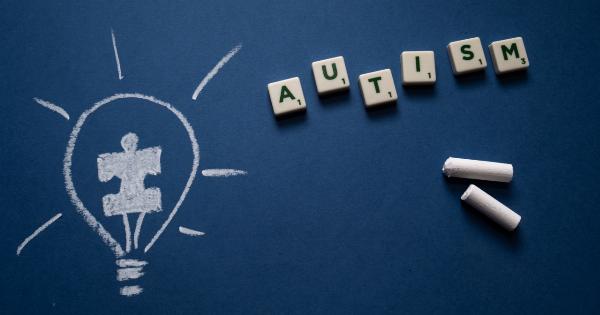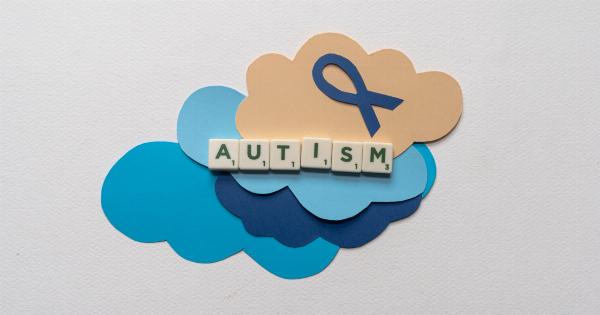Autism Spectrum Disorder (ASD) is a complex neurodevelopmental condition characterized by difficulties in social interactions, communication challenges, and repetitive behaviors.
Among the many sensory sensitivity issues experienced by individuals with autism, an interesting phenomenon is the fear of smell. This article explores the science behind this unique fear and sheds light on the underlying mechanisms.
Understanding Autism Spectrum Disorder
Autism Spectrum Disorder affects people across a broad range, with each individual having unique experiences and symptoms. However, certain commonalities are observed, one of which is sensory sensitivities.
Individuals with autism often experience either hypo or hypersensitivity to various sensory stimuli, including sound, touch, taste, and smell.
The Significance of Smell
Smell, also known as olfaction, is a crucial sense for humans and plays a significant role in our daily lives.
It helps us recognize and remember different odors, influences our emotions and mood, and even affects our preferences, behaviors, and memories. Smell is closely linked to our survival instincts, as it enables us to detect potential dangers, spoiled food, or toxic substances.
For individuals with autism, the way they perceive and process smells can be vastly different from typical individuals. While some may have heightened sensitivity to odors, others may have a reduced sense of smell.
This discrepancy can influence their overall perception and response to certain smells, leading to fear or aversion.
Hyper and Hypoosmia in Autism
In the realm of smell sensitivity, autism presents itself in two opposing ways: hyperosmia and hyposmia.
Hyperosmia
Hyperosmia refers to an increased sensitivity to odors. This means that individuals with hyperosmia perceive smells more intensely than the average person.
Everyday smells that would typically go unnoticed or be mildly pleasant for most people can become overwhelming, obnoxious, or even physically uncomfortable for those with hyperosmia. The heightened sensitivity can trigger anxiety, irritability, and fear responses, leading individuals with autism to avoid situations or environments that expose them to certain smells.
Hyposmia
On the other end of the spectrum, some individuals with autism may experience hyposmia, which is a reduced sensitivity to smells.
This means that they have difficulty detecting or distinguishing different odors, even those that are typically strong or pungent. Hyposmia can make it challenging for individuals with autism to identify hazards or recognize pleasurable scents. The fear of missing out on important olfactory cues might lead to anxiety or apprehension in certain situations.
Neurological Factors
The underlying neurological factors that contribute to the fear of smell in autism are still being researched. However, several theories have been proposed to explain this unique phenomenon.
Hypersensitivity and Over-Responsive Amygdala
The amygdala is an almond-shaped structure in the brain that plays a crucial role in processing emotions, particularly fear and anxiety responses.
In individuals with autism, the amygdala might have an enhanced response to sensory stimuli, including smells. This hypersensitivity can cause an exaggerated fear or aversion towards certain odors, leading to the fear of smell.
Perceptual and Cognitive Differences
Research suggests that individuals with autism process sensory information differently from neurotypical individuals.
Their perceptual and cognitive systems may interpret and categorize smells in unique ways, causing them to associate certain odors with negative experiences or emotions. These associations can trigger fear or anxiety responses when exposed to those particular smells.
Link to Traumatic Experiences
For some individuals with autism, a traumatic or negative experience related to a specific smell can create deep-rooted fear or aversion.
This is known as olfactory conditioning, which occurs when an odor becomes associated with a negative event or memories. This association can cause individuals to develop an intense fear response whenever they encounter that particular smell, even in different contexts.
Impact on Daily Life
The fear of smell experienced by individuals with autism can have a significant impact on their daily lives. It can lead to avoidance behaviors, limiting their participation in various activities or social engagements.
Moreover, the fear of smells can cause heightened anxiety or stress in certain settings, hindering their overall well-being.
Coping Strategies
Fortunately, there are coping strategies that individuals with autism can employ to manage and alleviate the fear of smell:.
1. Exposure Therapy
Gradual and controlled exposure to certain smells can help desensitize individuals with autism, reducing anxiety or fear responses over time. Working with a therapist who specializes in sensory integration can facilitate this process.
2. Modification of Environments
Modifying the environment to minimize or control the presence of triggering smells can provide relief. This may involve using air purifiers, scent-free products, or avoiding certain locations where overpowering smells are prevalent.
3. Sensory Tools and Techniques
Sensory tools and techniques, such as fidget toys, deep pressure techniques, or wearing masks or scarves scented with preferred smells, can help individuals with autism modulate their sensory experiences and alleviate fear or anxiety responses.
Conclusion
The fear of smell in individuals with autism is a complex phenomenon influenced by both hyper and hyposmia. The unique sensory processing differences and associations in autism contribute to this fear, impacting daily life and well-being.
Understanding these underlying mechanisms and employing coping strategies can help individuals with autism manage their fear of smell effectively and lead more fulfilling lives.






























